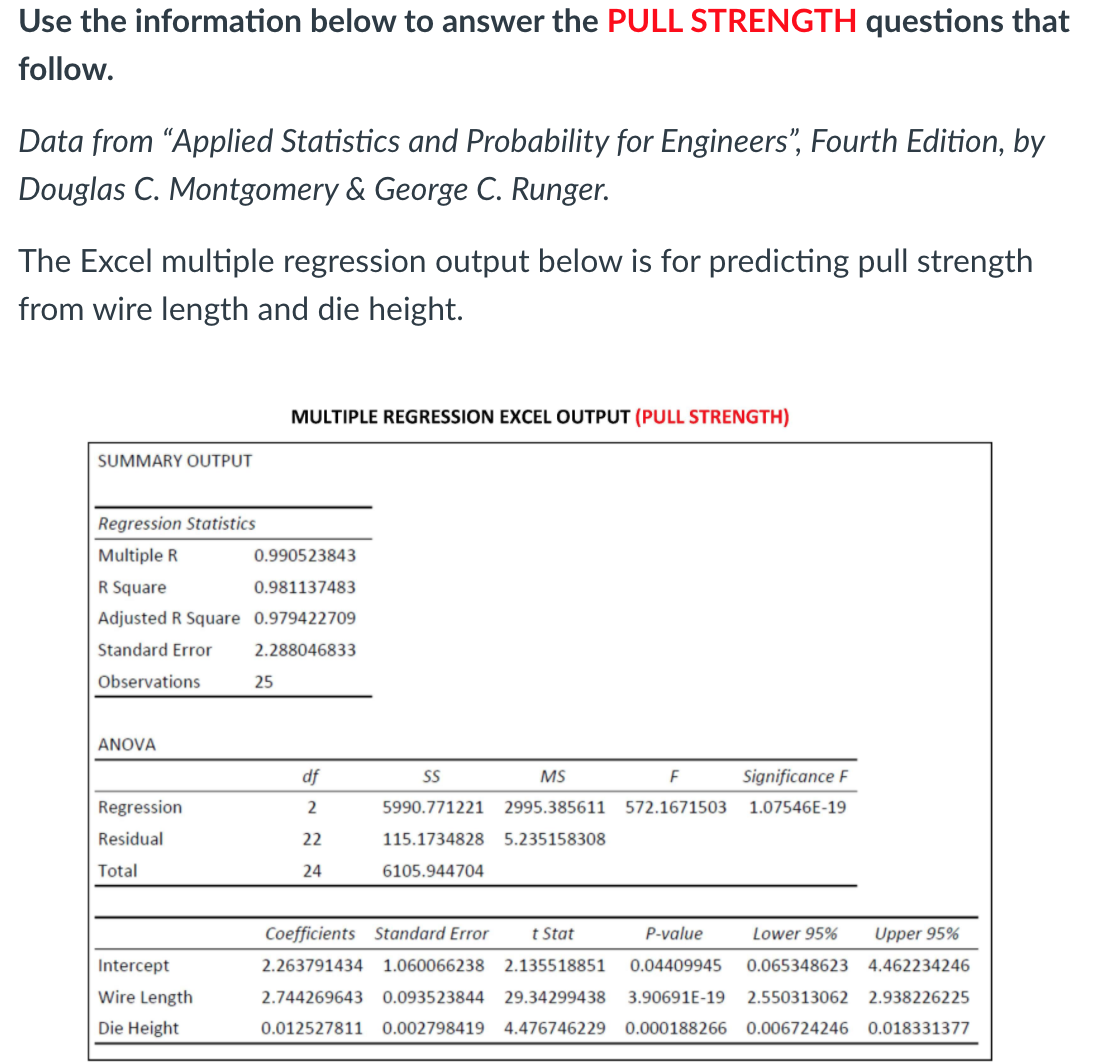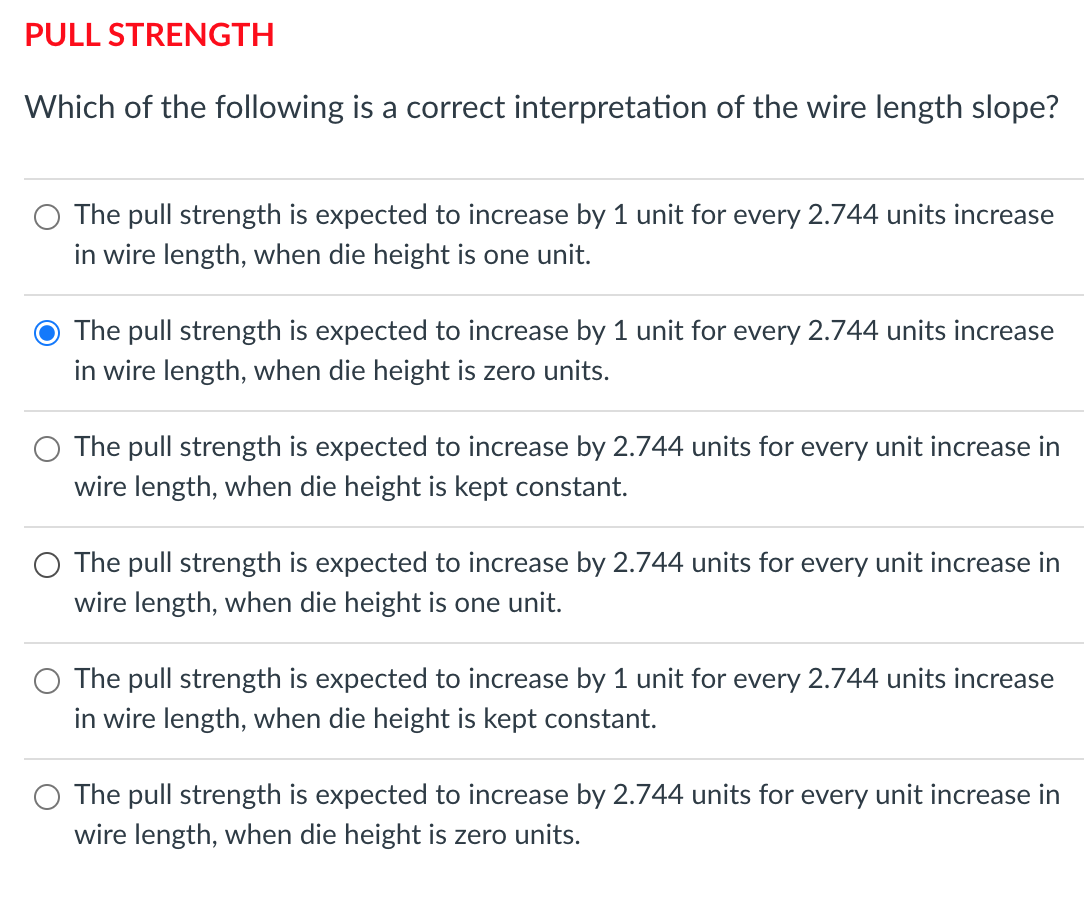Which of the following is a correct interpretation of the wire length slope? O The pull strength is expected to increase by 1 unit for every 2.744 units increase in wire length, when die height is one unit. The pull strength is expected to increase by 1 unit for every 2.744 units increase in wire length, when die height is zero units. O The pull strength is expected to increase by 2.744 units for every unit increase in wire length, when die height is kept constant. O The pull strength is expected to increase by 2.744 units for every unit increase in wire length, when die height is one unit. O The pull strength is expected to increase by 1 unit for every 2.744 units increase in wire length, when die height is kept constant. O The pull strength is expected to increase by 2.744 units for every unit increase in wire length, when die height is zero units.
Inverse Normal Distribution
The method used for finding the corresponding z-critical value in a normal distribution using the known probability is said to be an inverse normal distribution. The inverse normal distribution is a continuous probability distribution with a family of two parameters.
Mean, Median, Mode
It is a descriptive summary of a data set. It can be defined by using some of the measures. The central tendencies do not provide information regarding individual data from the dataset. However, they give a summary of the data set. The central tendency or measure of central tendency is a central or typical value for a probability distribution.
Z-Scores
A z-score is a unit of measurement used in statistics to describe the position of a raw score in terms of its distance from the mean, measured with reference to standard deviation from the mean. Z-scores are useful in statistics because they allow comparison between two scores that belong to different normal distributions.


Trending now
This is a popular solution!
Step by step
Solved in 2 steps








